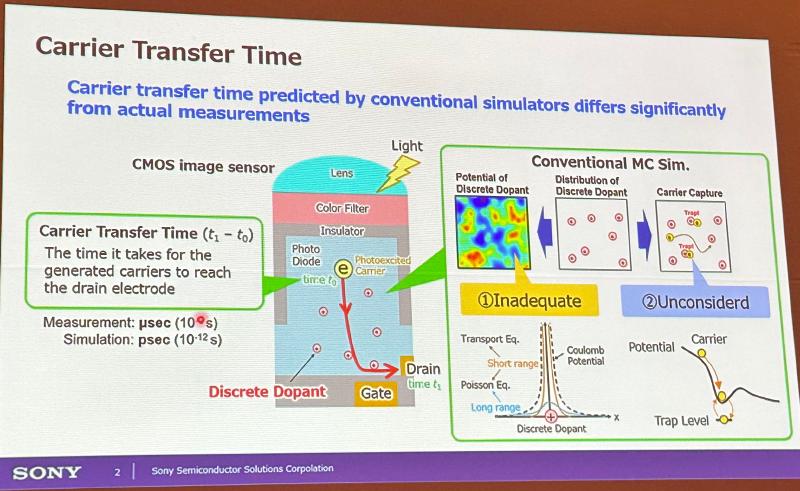Self-Consistent Monte Carlo Device Simulation of Capture-Excitation Processes of Carriers
Sony presented a Monte Carlo Device simulator for carriers. Monte Carlo is an interesting simulation method. I need to write a tutorial on how to effectivly implement MC methods in python.
Bayesian Optimization of Light Grating for High Performance Single-Photon Avalanche Diodes
Single-Photon Avalanche Diodes (SPADS). Laser illuminates scene and SPAD captutes the relection. One can compute the distance to an object. Used for autofocus of smartphones. SPADS are time of flight sensors. One can model SPADS as electrical devices or optical devices.
How to find optimal grating and DTI parameters? One can use empirical equations [Ono 2021]. However, this method uses ray tracing which does not always work based on wavelengths.
If we want to optimize the light absortion, we can express absorbtion as a function of geometry and then use baysian optimisation to find the optimal parameter set.
Using this method you can target the exact wavelength of interest. Really nice for inverse design. Speaker: Jeremy Grebot
Full-Band Monte Carlo Study of Hot Carriers for Advection-Diffusion Monte Carlo Simulations
Looking at SPADS. SPADS are time of flight devices. Very strong PN junction and thus a strong electric field. Simulating the avalanch is done using advection-diffusion Monte Carlo. Boltzmann equations are too long and difficult. We can simplyfy the equation to get faster simulation and then enable Monte Carlo. We integrate Boltzmann equations twice to get to Drift Diffusion (DD). DD has two parts advection and diffusion. The idea is that diffusion can be solved with MC.
Tradeoff complexity for time, because we do not care for some wave equation results.
Second part is imapct ionisation. There is a sparate model for this. This “creates” more particles than are lost. So this is the mechanism that causes the avalanch.
Band structure and optical absorption of strained SiGeC alloys: a Tight-Binding approach
Electrolyte-Gated FET-based Sensing of Immobilized Amphoteric Molecules Including the Variability in Affinity of the Reactive Sites

